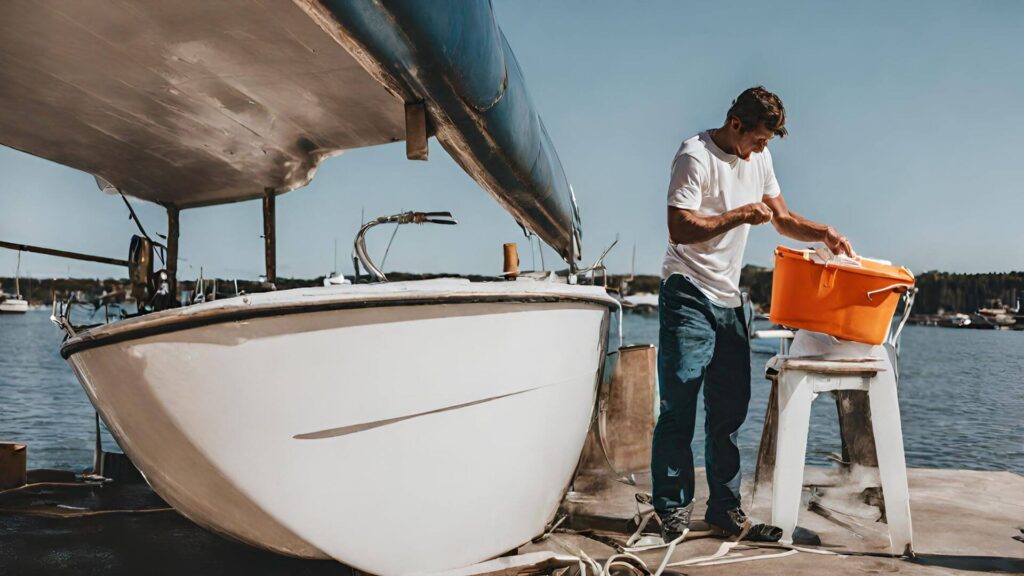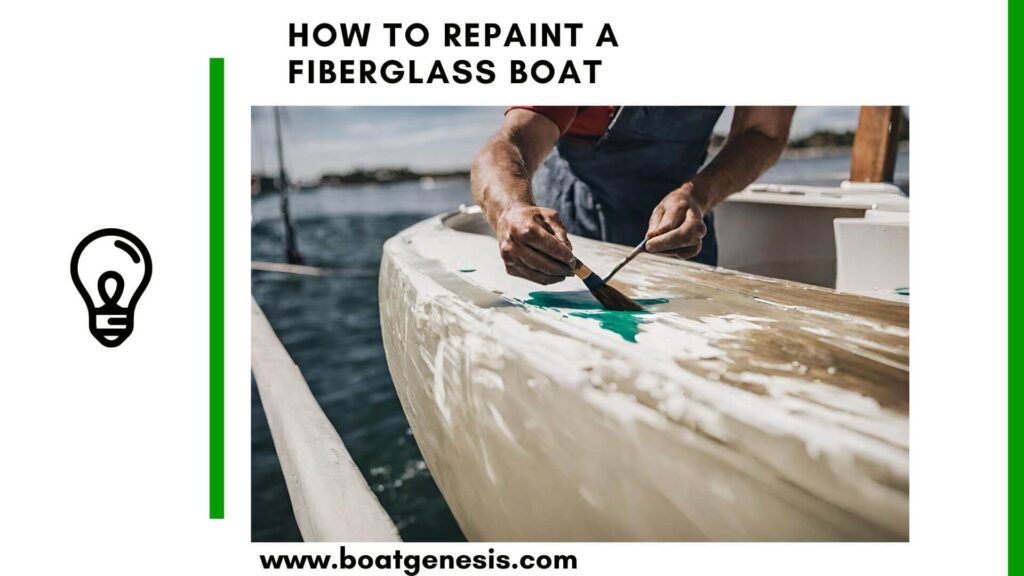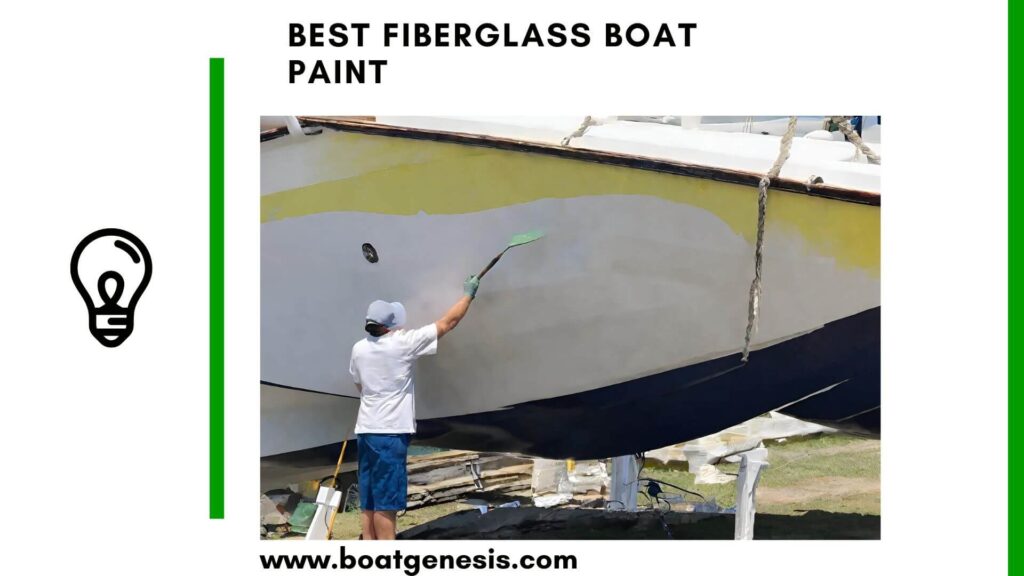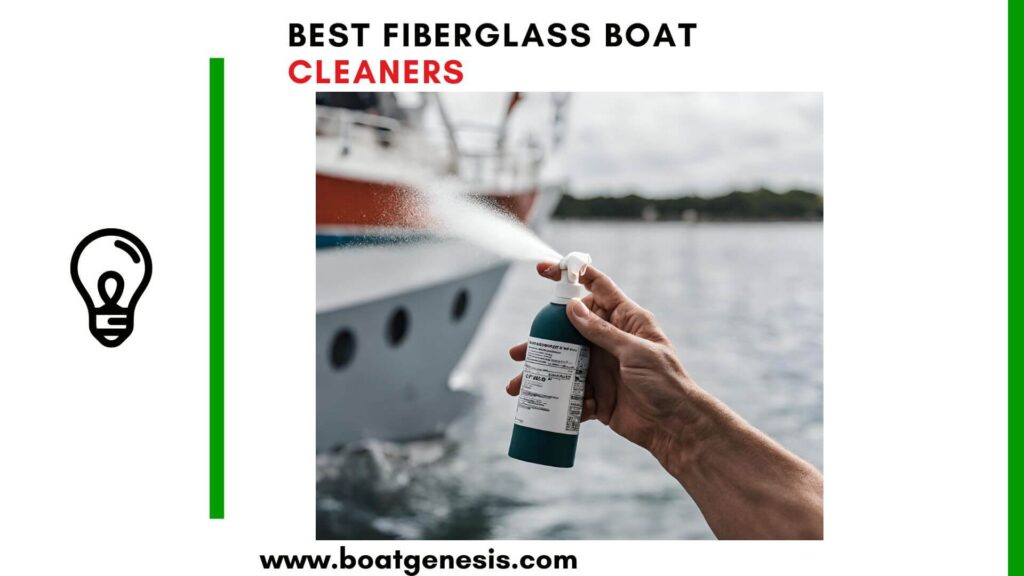Repainting your fiberglass boat isn’t just about maintaining its appearance; it’s also about preserving its integrity and ensuring it remains seaworthy for years to come.
Whether you’re looking to give your vessel a fresh new look, or you need to address some wear and tear, this guide will walk you through the process of repainting your fiberglass boat with ease.
How to Repaint a Fiberglass Boat?
Here’s everything you need to know about repainting a fiberglass boat.
1. Prepare Your Workspace and Materials

Before you dip your brush into a can of paint, it’s crucial to prepare your workspace. Ensure your boat is in a well-ventilated area, protected from the elements, and that you have all necessary materials on hand.
You’ll need quality marine paint, primer, sandpaper, cleaning supplies, and painting tools.
2. Clean and Sand the Surface
A successful paint job begins with a clean canvas. Thoroughly wash your boat to remove any salt, dirt, or grime.
After the boat is dry, it’s time to sand the surface. Roughing up the fiberglass with 40-grit sandpaper will help the new paint adhere better.
Pay extra attention to areas with epoxy or previous repairs.
3. Repair and Prime
Inspect the boat for any damages and make necessary repairs. Apply a thin coat of primer, sand lightly, and fix any surface imperfections.
A second primer coat may be necessary before you proceed to ensure a smooth base for your topcoat.
4. Repainting Your Boat
Choose the right paint for your boat.
One-part polyurethane paints are user-friendly and offer a good balance of durability and ease of application.
For a more durable finish, consider a two-part polyurethane paint. Apply the paint in thin, even coats, allowing adequate drying time between layers.
Use a roll-and-tip method for a professional finish, rolling on the paint and then smoothing it with a brush.
5. Finishing Touches
Once the final coat is dry, remove any masking tape, and touch up as needed. Apply a protective topcoat if desired, following the manufacturer’s instructions for best results.
Remember to take your time, work methodically, and always prioritize safety when working with paints and chemicals.
6. Add the Final Layer of Protection
After the paint has fully cured, it’s wise to add a final layer of protection to your boat. A marine-grade varnish or sealant can offer extra defense against UV rays, saltwater, and general wear and tear.
This step is particularly important if you want to extend the life of your paint job and keep your boat looking sharp.
==>> You should also read my guide on painting your fiberglass boat floor here.
Regular Maintenance
Once your boat is repainted and looks splendid, regular maintenance is key to keeping it that way.
Wash it down after each outing, and periodically apply a wax or polish to the surface to maintain its shine and protective layer.

This will help your paint job last longer and save you from frequent repaints.
Safety First
Throughout the repainting process, safety should be your top priority.
Wear protective gear such as gloves, goggles, and a respirator mask to shield yourself from harmful fumes and chemicals.
Ensure that your work area is well-lit and that you have a first-aid kit nearby in case of accidents.
Why Do You Need to Repaint Your Boat?
Repainting your boat isn’t just about keeping it looking sharp; it’s an essential part of boat maintenance that has several practical benefits. Here’s why a fresh coat of paint is more than just a cosmetic upgrade:
Protection Against the Elements
Your boat is constantly exposed to harsh conditions, whether it’s the beating sun, saltwater, or freshwater environments. Over time, this exposure can lead to fading, chipping, and peeling of the paint.
A new coat of paint acts as a shield, protecting the fiberglass from harmful UV rays and corrosive elements that can weaken the structure and lead to costly repairs.
Improved Performance
A smooth, well-maintained hull can actually improve your boat’s performance.
Paint that’s in good condition reduces drag in the water, which can enhance speed and fuel efficiency.
So, repainting your boat can make your outings more economical and environmentally friendly.
Increased Lifespan
Regularly repainting your boat can significantly extend its lifespan.
By addressing any issues like blistering or cracking early on, you prevent water from seeping into the fiberglass, which can lead to rot or other structural problems.
A well-maintained boat is a long-lasting boat.
Higher Resale Value
If you ever decide to sell your boat, a recent paint job can increase its market value.
A boat that looks well-cared-for and aesthetically pleasing is more likely to attract potential buyers and command a higher price.
Personal Satisfaction
There’s also the undeniable satisfaction that comes from taking pride in your boat’s appearance.
A freshly painted boat can be a source of personal pride and joy, reflecting your commitment to your vessel and the boating lifestyle.
In summary, repainting your boat is a crucial maintenance task that offers protective benefits, enhances performance and efficiency, prolongs your boat’s lifespan, can increase its resale value, and provides personal fulfilment.
It’s an investment that pays dividends in both the short and long term, ensuring that your time on the water is always well spent.
Conclusion
Repainting a fiberglass boat can be a rewarding DIY project that not only enhances the vessel’s appearance but also contributes to its longevity.
By following this detailed guide, you’re set to tackle the task with confidence and achieve professional-looking results.
Remember, the key to a successful paint job lies in preparation, attention to detail, and patience.
This article was all about how to repaint a fiberglass boat. I hope you have gained value from it.

Founder of BoatGenesis, Warren has hands-on experience in fiberglass boat repairs, marine equipment testing, and powerboat building. Learn more about Warren.




